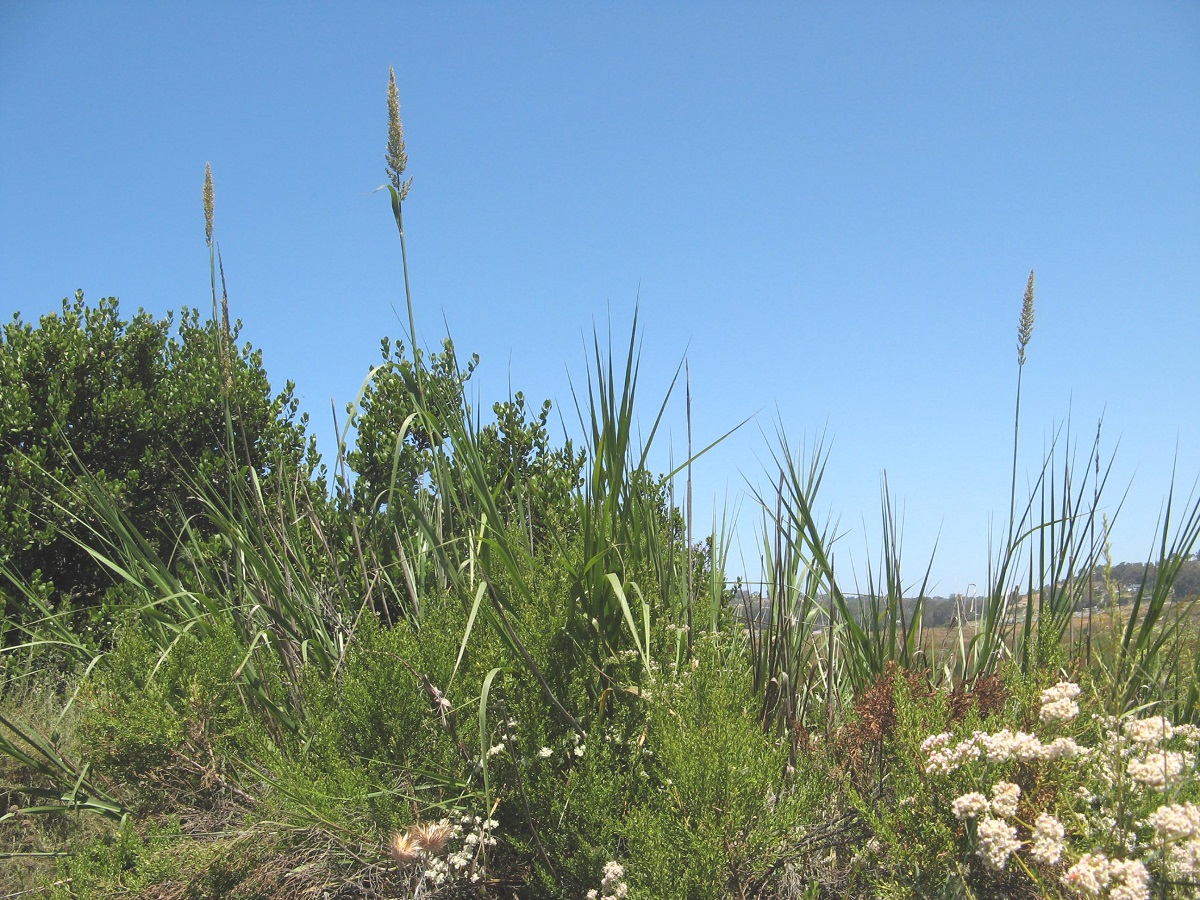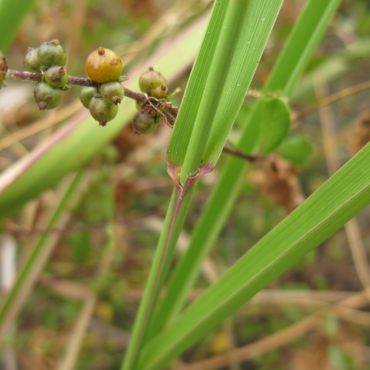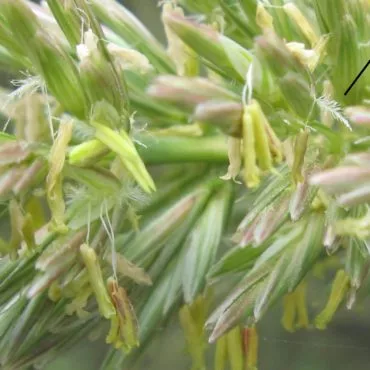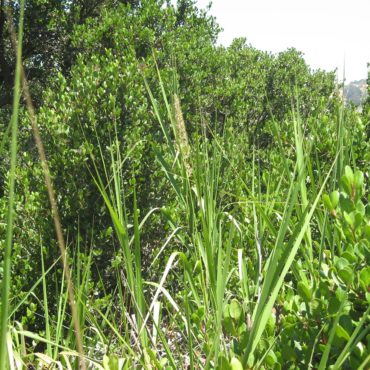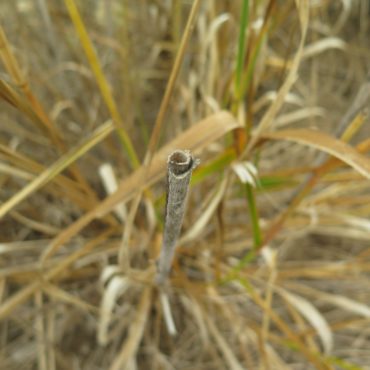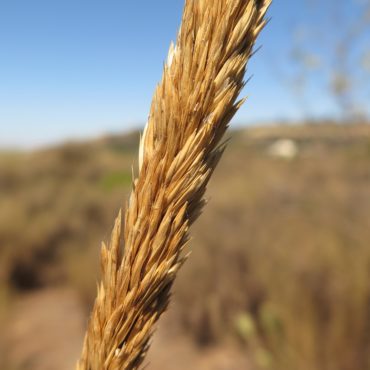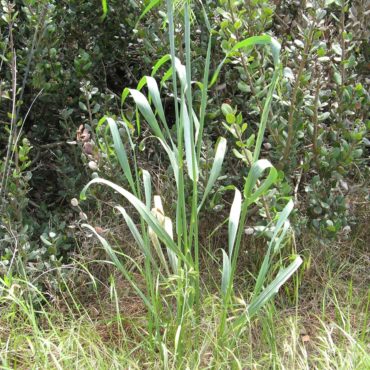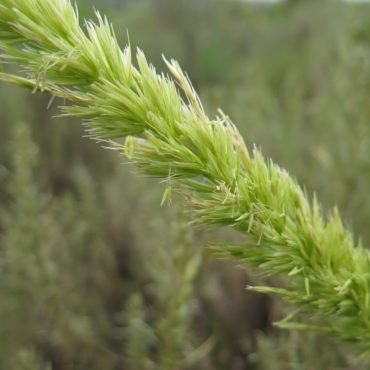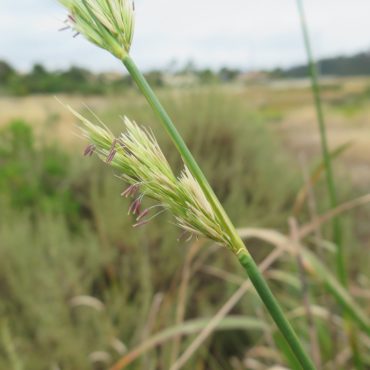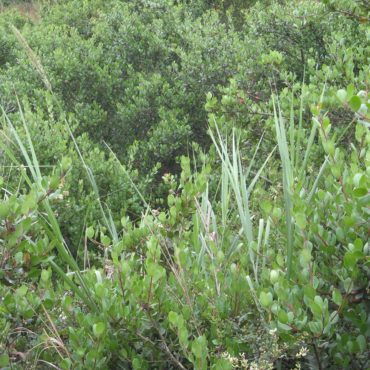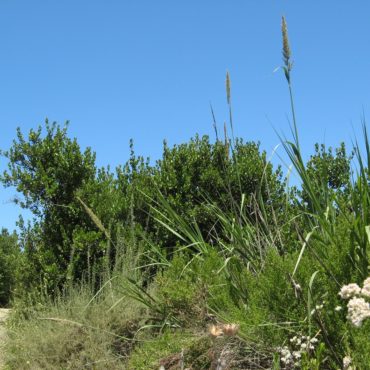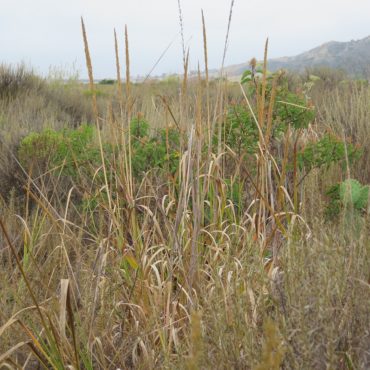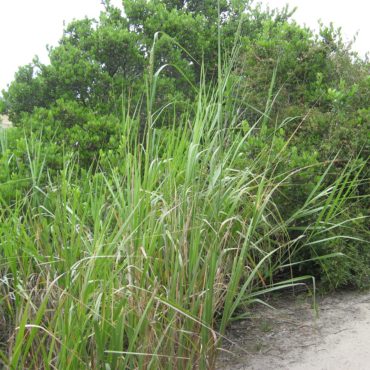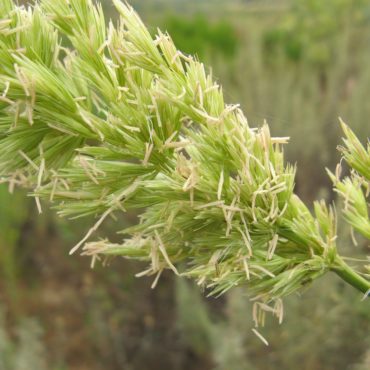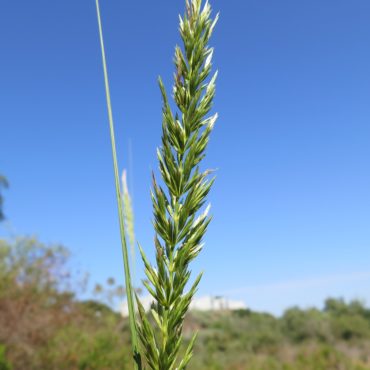“ Grass is what holds the earth together.
Grass made it possible for the human race to abandon his cave life and follow herds.
Civilization was based on grass. Everywhere in the world.” P. Hansen 493
Giant wild rye (Elymus condensatus) is our largest native grass. With leaves three to four feet in length and flower stalks to eight feet or more, this perennial grass often towers above the surrounding shrubs.
Grass flowers, or florets, are clustered along the top of the flowering stalk, but they lack the colorful petals of typical flowers. The pollen-bearing anthers can sometimes be seen dangling out of the florets, from where they can more effectively shed their pollen into the wind.
Several Native American tribes made arrows from the long, strong flowering stalks, straightening them with heated stones.

